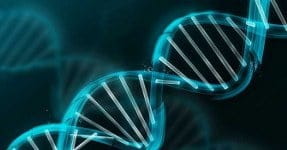Preimplantation Genetic Diagnosis (PGD)
In IVF, to decide whether embryos are genetically healthy or not. Preimplantation genetic diagnosis (PGD) is a reliable method which can be applied to women who have a history of unsuccessful IVF treatments, who have experienced problematic pregnancies due to genetic defects (down syndrome) and who are at an advanced age. For couples with advanced male related conditions and a defined risk of genetic disease, PGD is applied to have a healthy pregnancy.
Preimplantation genetic diagnosis (PGD) is a method which involves the examination of the embryos which are developed after IVF or ICSI and if suitable for the procedure, doing a biopsy on those embryos by extracting one or two cells. It is used to examine the embryos in terms of chromosome structure and numbers before transplanting them in to the mother’s womb. The aim of PGD is to make sure that the healthiest embryos are chosen by analyzing chromosome anomalies.
Fertilized eggs (after ovum pick up and fertilization by sperm) start to produce the first two celled embryos at the end of the first day and these start, rapidly, to increase cell numbers by cleavage (cell division), blastomere. As a result of fertilization an excess cell called “polar body” emerges. At the end of the fifth day, within the embryos whose number of cells have increased there starts to build up structures full of fluid and these cells are called “blastocysts”. Of those cells, whose number increases by division, some will develop into the fetus (baby) while some others start building up the layer called trophectoderm which will constitute the placenta that will be responsible for the nutrition of the baby. PGD is done by examining genetic material of the cells extracte by biopsy from the polar body, blastomere or trophectoderm.
In order to determine genetic diseases and to select HLA matched embryos PGD is done via PCR analysis of the biopsy cells on the third or fifth day of embryo development. DNA material in each cell extracted via PCR is duplicated. On the third day of fertilization, embros have only 6-8 cells (blastomere) and at this time, only one cell can be extracted from the embryo and PCR be applied. However, on the fifth day, the embryo reaches the blastocyst stage and more cells can be extracted from trophectoderm and more reliable results can be obtained by PCR.
PGD in brief:
- In ideal cases increases the chances success of IVF
- Increases the chances of pregnancy.
- Decreases the risk of miscarriage.
- Decreases the risk of terminating the pregnancy for medical reasons.
- Decreases the chances of multiple pregnancies.
- Reduces the amount of economical and psychological load on couples due to repeated unsuccessful IVF treatments.
- Provides the family with a chance to select sex.
Who should have PGD done?
- Candidate mothers of 36 and higher years of age
- Couples who have tried IVF treatment at least twice but couldn’t get pregnant
- Couples who have experienced concurrent miscarriages (except for translocation carriers)
- Couples (one of) who(m) are balanced translocation carriers
- Partners who have a family history and risk of single gene diseases such as thalassemia (Mediterranean anemia), sickle cell anemia, cystic fibrosis and SMA
- To choose HLA matching embryos
- Couples who have had children with genetic disorders previously
- Mothers with a pregnancy history of aneuploidy (chromosome defects)
- In gonadal mosaicism cases (couples having normal genetic test results although they’ve had two or more cases of anomalies regarding the offspring)
- TESE cases (cases with advanced male infertility)
- Poor responders (in cases when response to hyperstimulation procedure is insufficient)
- In cases regarding transcendency related to the X chromosome, if the disease cannot be diagnosed genetically, then sex selection.
How safe are embryo biopsy and PGD?
In order to do Preimplantation genetic diagnosis (PGD) cell samples from every embryo should be taken. Chances of damaging the embryos during PGD is almost zero and the rate of reported damage is stated as 0.3%.
How reliable are the results of PGD?
Although they may vary depending on the method used, the chances of error are about 2-7%.
What does “single cell diseases” mean?
When the structure of units encoded in our DNA called genes are altered or broken, this leads to a group of genetic diseases called single cell disorders. Such genetic diseases are more common in cousin/relative marriages.
The preimplantation genetic diagnosis (PGD) of single cell disorders relies on the DNA analysis of one cell.
Preimplantation genetic diagnosis (PGD) applies to cystic fibrosis, Hemophilia A1 and B, Kistik fibrosis, Hemofili A1 ve B, Alpha 1-antitrypsin deficiency, Tay-Sachs disease and Sickle cell anemia, Retinitis pigmentosa, Thalassemia (mediterranean anemia), Alport syndrome, Gaucher’s disease, Long-Chain Acyl CoA Dehydrogenase Deficiency, multiple epiphyseal dysplasia, achondroplasia (dwarfism), Neurofibromatosis, epidermolysis bullosa, Myotonic dystrophy, X-linked hydrocephalus, cancer predisposition and Fanconi anemia
As the technology advances, Gender Selection is to determine the gender of the baby by studying on the cell taken by biopsy method (PGD), from the embryos (fertilized eggs) obtained by in-vitro fertilization treatment.
Gender selection has been legally realized in Northern Cyprus for almost 15 years. Since gender selection has not been legal globally, especially in European countries, many families prefer our center for gender selection.
As the couples willing for gender selection could have a child by normal ways, in-vitro fertilization treatment must be started in order to obtain an embryo.
PGD operation is realized, subsequent to normal IVF process, by a genetic test implemented during development of embryos (fertilized eggs).
Processes to be applied during PGD treatment:
- Primarily, egg multiplication process (ovulation induction) should be implemented exactly the same way in in-vitro fertilization,
- When the eggs reach to a specific dimension, egg collection processes will be realized with a slight anaesthesia,
- Embryos are obtained with sperm sample taken from the spouse,
- Embryos will be developed within laboratory environment for 3 days,
- On the 3rd day, genetic screening will be realized on embryos by extracting 1 or 2 cells. As numeric anomalies in chromosomes will be examined by FISH (Fluorescent in-situ Hybridization) technique, and PCR (polymerase chain reaction) is used for single genetic disorders.
- Healthy and desired gender embryos will be transferred into candidate mother on the 5th day.
- After 12 days, pregnancy test will be realized to determine whether the candidate mother is pregnant.
Gender selection is an in-vitro fertilization application which has a high chance of pregnancy especially in young patients (over 35 age) due to number and quality of eggs. In pregnancies obtained after treatment, babies being healthy and accuracy rate of its gender is 99.9 percent.
Pregnancy success rate after gender selection treatment differs depending on patient’s age, egg reserves, how many embryos will be healthy and at the same time has the gender desired by family.
Why Northern Cyprus?
- Gender selection is legal in Northern Cyprus.
- The price of gender selection operation is much more advantageous comparing to other countries.
- Experience and knowledge in gender selection.
- Holiday opportunity in a country where sun always shines.
- Most important of all, special care and treatment provided by our high quality and modern IVF center under supervision of Gyn. Op. Dr. Murude Cakartas Dagdelen.



